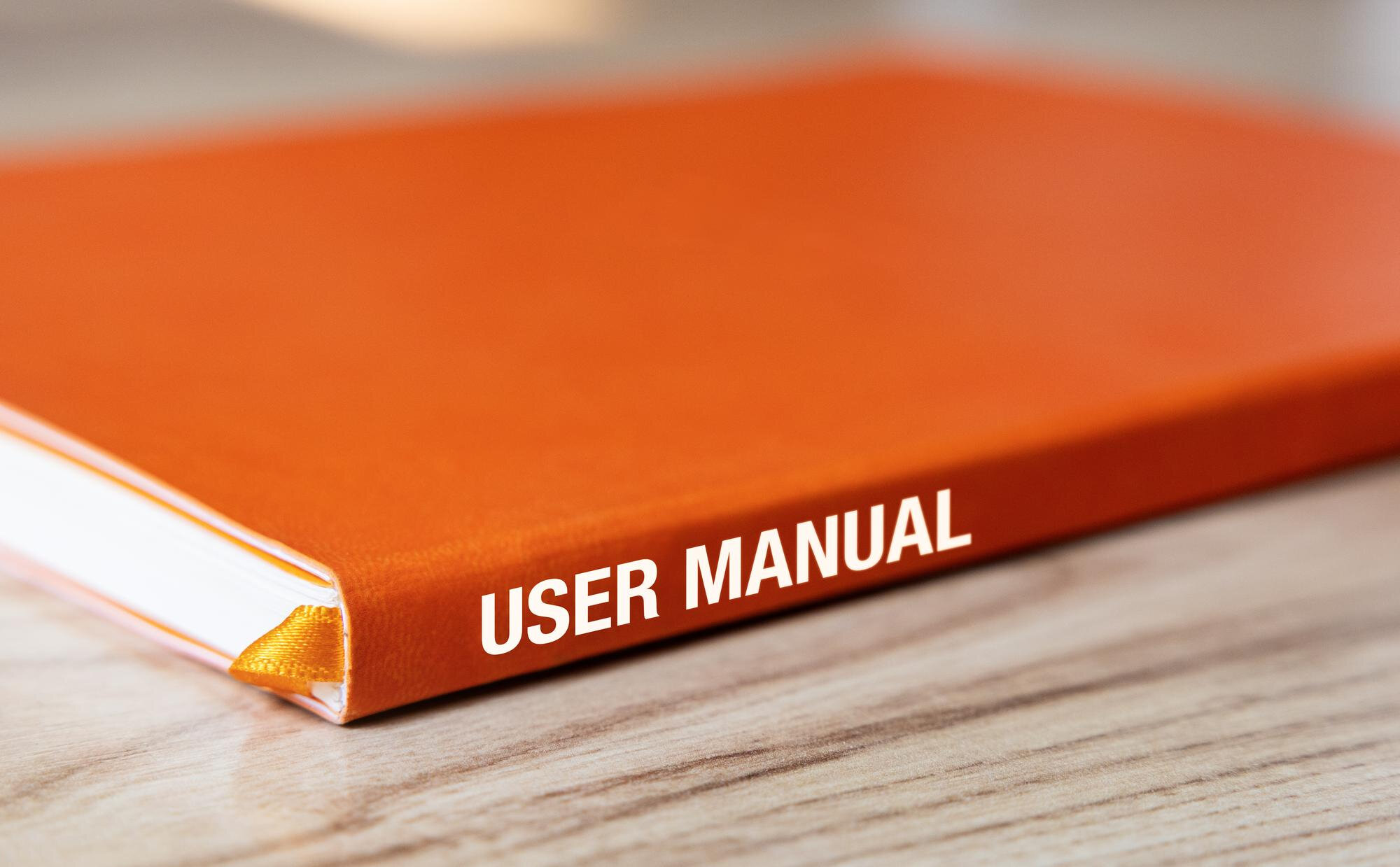Engineering Solutions: How to Create Comprehensive and User-Friendly Technical Manuals
Engineering can be complex, even for people who have spent years studying and practicing different aspects of the discipline. It's broad and filled with intricate and critical concepts that, more often than not, will require some level of guidance.

Given the complexities involved in engineering, the importance of well-crafted technical manuals becomes evident. Even more so because almost every part of our lives is driven by engineering, from the simple setup of home plumbing systems to the more advanced setups of Heating, Ventilation, and Air Conditioning (HVAC) Systems.
Having a grasp of engineering principles can be invaluable for engineering students and professionals across different sectors of the engineering industry.
Technical manuals are important to help equip people to solve engineering problems. Whether they are simple problems faced by regular homeowners or more complex problems requiring technicians of intermediate to high levels of engineering skill, a technical manual provides adequate and comprehensive guides that essentially hand-hold individuals through the entire process of solving an engineering issue.
This article will guide you through the step-by-step process of creating comprehensive and easy-to-understand technical manuals for engineering solutions and discuss the importance of translating them to reach a global audience.
The Importance of Technical Manuals in Engineering
Engineering is a relatively broad field with different segments. Examples include Civil Engineering, Mechanical Engineering, and Electrical Engineering, to name a few. Each of these fields requires extensive knowledge both in theory and practice. A technical manual breaks down complexities in handling specific aspects of engineering into actionable guidelines that can be followed step by step from start to finish.

To achieve this level of effectiveness, technical manuals must incorporate certain key elements. These include detailed content and a structured layout.
This ensures that the project is safe and guaranteed to provide value. Conversely, poorly written manuals are a safety hazard and a threat to the lives and well-being of the engineer as well as the end-users for whom the project is meant.
One of the first things to do when preparing a manual is to identify the target audience, or in this case, the target user. The experience level of a user with high expertise and one with low to intermediate engineering expertise is vastly different. While the former might understand technical industry terms and need top-line guidance to understand what a project requires, the latter might need a more comprehensive approach with term definitions and detailed breakdowns to guide them through each project step.
The technical manual must address these peculiarities and different experience levels in a way that individuals in these categories would understand.
Key Elements of Comprehensive Technical Manuals
There are two key elements of a comprehensive technical manual. They include:
Detailed Content
Creating a technical manual requires attention to detail. As the global space continues to evolve, driven primarily by technology and consumer needs, industries across the globe evolve alongside. Policies are adjusted, processes are optimized, innovations and new discoveries are integrated into existing systems, safety protocols are updated, and many more. An engineering technical manual must account for all of these situations and many more so that it can be relevant to the user.
While detailed content is crucial, how this information is presented is equally important. A well-structured layout ensures that the manual is user-friendly and easy to navigate. It must cover relevant information from standard operating procedures to safety protocols, maintenance schedules, technical specifications, schematics, etc.
Thorough documentation is required when creating an engineering technical manual, especially for complex engineering processes like large-scale civil engineering projects, automotive engine design, oil and gas exploration and production, and many more. In these processes, the most minute missteps can jeopardize the entire project. As such, any technical manual for projects in this category must be comprehensive, detailed, and all-encompassing.
Structured Layout
Engineering technical manuals are comprehensive documents that usually address engineering problems. These problems may often be complex, requiring the manual to be comprehensive. As such, it is necessary to ensure that technical manuals are well-structured. Proper structure allows the user to easily understand the processes and instructions being discussed in the manual.
Beyond a structured layout, making the manual user-friendly is essential.
Here’s how you can achieve that.
Creating User-Friendly Manuals
It's one thing for a technical manual to be comprehensive, detailed, and well- structured, and it's completely different for the same manual to be user- friendly. A user-friendly manual must be clear and concise and have interactive elements and illustrations that help guide people through its use process.
Clarity and Simplicity
Clarity and simplicity are key components of a user-friendly technical manual.
The manual copy should be written as concisely as possible. Engineering processes are already overly technical and should be explained in the simplest, most relatable way possible so that they can be understood without hassle.
To ensure that your technical manual is written clearly and concisely and avoids jargon, it's best to use short sentences for better readability, typically at least twenty words per sentence. Proper paragraphing also improves the clarity of your technical manual. Ensure that each paragraph contains only one or two ideas and is written logically.
The Use of Visual Aids
Visual aids are an important part of learning, especially in the case of complex documents like engineering technical manuals. Generally, people find it easier to understand documents with an illustration or visual guide. Incorporation of diagrams, flowcharts, and images to illustrate complex processes will ensure that your technical manual is a lot more user-friendly and easy to follow and implement when solving engineering problems.
To ensure that your visual guide can be understood easily, ensure that they're properly labeled or have accompanying captions, illustrative/explanatory texts, or captions that speak to whatever process the visual aid is addressing.
Interactive Elements
Your technical manual should include interactive elements to make it more engaging for users and ensure that it is easy to understand and use. To achieve this, you can include hyperlinks, videos, and Q.R. codes that direct users to additional resources to find insights, use cases, and visual explanations of engineering processes they may be struggling with.
As engineering becomes more global, the accessibility of technical manuals in multiple languages is increasingly important. This leads us to the necessity of translating these documents. It invites the user to take clickable actions, offering them more insights through extra resources. You can also track these interactions, such as link clicks, and use them to turn your document into a lead capture channel for other ancillary or related services you offer.
The Necessity of Translation in Global Engineering
‘The world is a global village’ Rapid growth of technology and digitization has ensured that this sentiment is not just a cliche but a very present reality. The need to solve engineering issues is universal, as engineering projects are not fractured along national or continental boundaries. As countries become more and more global in their outlook, so does their approach to solving problems or building solutions.
As a result, an engineering technical manual must be able to meet the needs of those who require solutions wherever they may be. For a technical manual to be effective, it must be accessible in multiple languages to cater to the diverse and global engineering workforce.
Sometimes engineering projects may require teams from different parts of the world to collaborate, as in the case of the International Space Station (ISS) Program, which was a collaborative project between NASA (USA), Roscosmos (Russia), JAXA (Japan), ESA (Europe), and CSA (Canada), the Large Hadron Collider (LHC) at CERN which was also a global scientific collaboration involving scientists and engineers from over 100 countries, the construction of the Eurotunnel which was built by a consortium of British and French engineers, the infrastructure development of the 2022 Qatar FIFA World Cup which was one of the largest scale projects in the middle east which involved engineers from the region as well as Europe and Asia.
To ensure that your technical manuals are effective worldwide, here are some best practices for translating them.
1. Accuracy of content and technical terms.
Maintaining the accuracy of the content, especially concerning technical terminology and industry-specific language, is a significant problem encountered by many experts when attempting to make their technical manuals available in other languages.
Technical terms and acronyms may have little equivalents in the target language, making translation tricky. Similar to different sectors, the engineering industry has unique terminologies closely associated with it. As such, translators must first be familiar with these terms (which is not always the case) and then find the equivalent in the language to be translated to (which may not exist as these terms are industry-specific).
2. Maintaining the intent of the original manual.
Another factor affecting the translation of technical documents is the possibility of losing context, which effectively removes the manual's original intention from the translated copy. This usually happens when individuals carry out the translation without any background in engineering and, as such, carry out a word-for-word translation without first understanding the context and inputting that same context into the translated copy.
Implementing these best practices can lead to successful outcomes, as seen in the following case studies and success stories.
Best Practices for Translating Technical Manuals

Choosing the right translation partner
The most important step is translating your engineering technical manual into another language. Selecting a translation partner should be firmly rooted in two major pillars: industry expertise and certification.
First and foremost, your choice of translator needs to have consummate expertise in translation engineering documents. They must be aware of the industry terminologies and have a working idea of the engineering space to contextualize the document properly during translation because the equivalent of some terms may not exist in the language to which they are translated.
A key question you should ask is their familiarity with relevant industry segments, especially the segment your technical document directly speaks to. If your technical documents address construction engineering, it's highly unlikely that a technical document translator with overwhelming mechanical or aerospace engineering expertise will offer the best value. Check out our experts at Toronto Translations to get the best hands on your manuals.
It would help if you were also keen on the industry certification of the technical translator you intend to work with. Compliance with industry-recognized certifications, such as ISO 17100, and adherence to standards like ASTM, ASME, or DIN are qualifications to look out for.
The translation process
When identifying a translator to work with, due attention must also be paid to their translation process. The translation workflow should broadly allow for an initial assessment, the actual translation of the document, and a review of the translated document with an opportunity for continuous feedback until the document is the best it can possibly be.
Of course, this may also mean you might want to have a language expert vet the output received from the translator to verify if it aligns from context to language. All in all, translating an engineering technical document is a collaborative process between engineers and translators to ensure that the result satisfies the document's objective. This is exactly the foundational framework of our services at Toronto Translations.
Quality Assurance
The objective of an engineering technical document, whether in its original form or translated into another language, is to provide value to engineers who need guidance or solutions to engineering issues. Where the document cannot effectively provide this, its purpose is defeated. As such, you are ensuring your technical manual's quality assurance is essential.
Ensure that you integrate glossaries into the document, especially in cases where some industry-specific terminology may not exist in the language to be translated to. Another way to ensure quality assurance is to use standardized terminology across all translated documents.
Also, pay attention to the formatting of the document, from font size to font style, paragraphing, line spacing, and more. Consistent formatting ensures that the document is easy to use.
Case Studies and Success Stories
Caterpillar began in 1925 with the merger of Holt Manufacturing Company and C.L. Best Tractor Company. Facing a drop in demand after the Great War, the two companies united to form Caterpillar Tractor Co. LTD. They reduced production of their popular war tractor and shifted focus to smaller field tractors and highway construction machinery.
The government later funded the Federal Aid Highway Act, which, due to minimal competition, provided Caterpillar with lucrative contracts and highway service agreements.
After profiting from the Highway Act, Caterpillar expanded internationally, starting in England. From there, technical industrial translation services facilitated further growth.
In 1950, Caterpillar established its largest base outside the United States in England. Fifty years later, they opened their first factory in Russia at the Tonso Plant, producing a wide range of heavy machinery as the market expanded due to oil discoveries.
They designed custom vehicles and equipment adhering to Russian regulations, which eased their entry into the global market and gave them an advantage over their rival, Komatsu. This Japanese company entered the American market in 1960.
Would you like to gain access to the global market as well? Trust Toronto Translations with your technical manuals.
Benefits of Industrial Translation

As Caterpillar continued its global expansion, they built more than two dozen factories in Shanghai, mass-producing machinery to increase profit margins.
They relied on industrial translation to facilitate communication and training for:
Effective Technical Translations for Engineering Manuals
Engineering technical manuals are important documents that enable engineers to solve engineering problems. These manuals must be on par with current innovations and engineering trends. Properly written technical manuals are usually compliant with best practices and engineering standards, ensuring that the project is safe for use and guaranteed to provide value.
On the other hand, a poorly written technical manual can threaten both engineers and the end-users for whom the project is meant. Your technical manual must be user-friendly and properly formatted with short sentences and proper paragraphing. It must also be accessible in different languages to serve a global audience.
To do this effectively, you must choose the right translation partner, enable a collaborative translation process, and be certain that your partner offers a rigorous quality assurance process. Toronto Translations ticks all the boxes when it comes to translating technical manuals. The world is evolving! Don’t be left behind!
Get Your Quote Now!
Don't Wait a Second Longer! Let Technical Translations Services Translate Your Document Today!
905-581-9968









 French Translation
French Translation